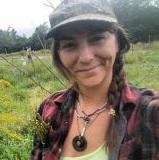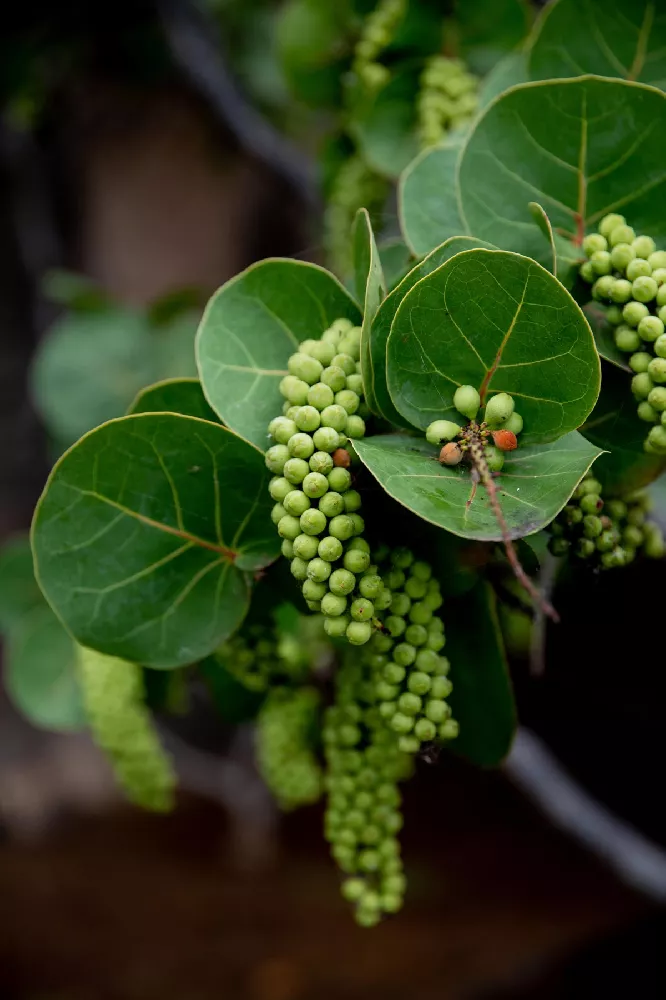- Home >
- Shrubs and Bushes >
- Cineraria
Cineraria for Sale - Buying & Growing Guide
Lowes - 2-5-Quart - Cineraria Plant
Enter your zip code to find nearby stores that may carry this plant.
The cool-weather-loving cineraria blooms as early as February and is sometimes called the first flower of spring. This tender perennial produces dazzling, daisy-like flowers for up to four weeks. The species is divided into two types: compact florist’s cineraria, and big, bushy garden varieties. Potted cineraria is an annual, but when planted outdoors it will reseed and produce new plants in the spring. Here are some quick facts about the cineraria:
- Has a short, colorful blooming season.
- When planted outdoors, will reseed and produce new plants in the spring.
- Prefers shady spots with indirect sunlight.
Planting and Care
Planting instructions
Cinerarias thrive in cooler climates. Plant them outdoors in locations where daytime temperatures remain between 45 and 68 degrees Fahrenheit and nighttime temperatures do not dip below 35 degrees Fahrenheit. Using slightly acidic potting soil, plant your cineraria in a location that receives partial to full shade. Space smaller plants 12 inches apart, and give larger shrub varieties 18 inches of space between plants. Water cinerarias immediately after planting. A small pot is best for indoor plants, as the cineraria flowers more prolifically when it’s rootbound. Place indoor plants near a window where they can receive indirect sunlight. Never place cinerarias in direct sun, as this may cause the flowers to drop early.
Watering and nutrients
Cinerarias need water once the top inch of soil is dry. Water moderately in a pot that allows good drainage. Be careful not to waterlog the roots. Once water drains into the saucer, empty the excess and do not let the plant sit in standing water. Your cineraria will need slightly more frequent waterings during its blooming season and in warmer periods. Feed outdoor plants with 14-14-14 slow-release fertilizer every two weeks until flowers have stopped blooming. Indoor plants are greenhouse-fertilized and usually will not need to be fed.
Pruning
Smaller cinerarias and houseplants don’t need to be pruned. Cut outdoor garden cinerarias back by one-third in the late winter, before the growing season begins. If you are planning to allow your plants to reseed, do not deadhead the flowers, but let them wither and fall. Deadhead wilted flowers on indoor potted plants. Removing unhealthy flowers encourages new buds and may extend the blooming season.
Pests and diseases
Cinerarias are prone to mildew and fungus, especially in damp conditions. Powdery mildew is easy to spot—watch for white, powdery-looking growths. Yellow spots on the underside of leaves may indicate downy mildew. Spray the affected leaves with organic fungicide per the manufacturer’s directions. Root and collar rot can occur either due to overwatering or leaf disease, which weakens the plant. Cinerarias rarely survive root rot, so check often for plant discoloration and wilting. For an outdoor cineraria plant, be on the lookout for aphids, which you can control with a diluted mixture of soap and water.
Soil
Cineraria plants need a balanced soil environment that is well-draining, but which will also hold onto some moisture. Rich soil with a high content of organic matter, such as compost, will work best, as this type of soil drains well but is also able to retain a good amount of moisture and hold it around the plant’s roots.
The type of soil you grow your cineraria in will have a big impact on how well you can meet its watering needs. A heavy and poorly draining soil will usually lead to the plant’s roots being surrounded by too much moisture, leading to root rot, while a gritty soil that drains too quickly won’t allow the roots the time they need to soak up an adequate amount of water.
The plant prefers slightly acidic soil, but will typically grow well in any well-draining, fertile soil.
Light
Cineraria plants which are kept outside prefer a position of partial to full shade. It is unusual for a flowering plant to be such a shade lover, so take advantage of this trait by planting it in a darker corner of your garden, which would benefit from being brightened up with the plant’s vibrant blooms. When grown outdoors, cineraria plants can tolerate some sunlight, but ideally, this would be in the morning when the sun’s rays are not at their most intense.
Shade during the heat of the afternoon will be most appropriate for this plant. If you are keeping cineraria as a houseplant, a position that receives bright but indirect light would be ideal. It doesn’t need a huge amount of light to survive indoors, but it will struggle to thrive in the shade as a houseplant.
Temperature
Cineraria plants are hardy in USDA hardiness zones 9, 10, and 11. They prefer cool temperatures overheat, but are not frost hardy. Inside these hardiness zones, the flowers can be grown as annuals, and if the conditions are right, they will bloom for most of the year.
Outside of these hardiness zones, they are grown as short-lived perennials, and once the frost arrives, the plants will quickly die and need to be discarded. They will not survive if nighttime temperatures dip much below 35° F, and will perform best if daytime temperatures range between 55 and 65° F. At this temperature level, cineraria plants will bloom for a long period. If temperatures exceed 80° F, the plants will cease blooming.
They can be kept as houseplants in average room temperature, but if possible, keep them in one of the cooler rooms in your home, as too much warmth will cause the blooms to suffer. Always keep cineraria plants away from any heating vents or cold draughts.
Humidity
These plants enjoy high humidity, which outdoors is not easy to control, but by keeping their soil consistently moist, you will be elevating the humidity level slightly, as the air around the plant will be moist while some of the moisture evaporates from the soil.
If your cineraria plants are kept indoors, they will need additional measures to have their humidity levels increased. The air inside homes tends to be quite dry, especially over the cooler months, because heating systems dry the air out. Misting plants with water is often an easy solution for this, but it is not advisable for cineraria plants as misting will damage the flowers. Instead, you can use an electric humidifier or a pebble tray.
To create your own humidity pebble tray, simply spread a layer of pebbles or gravel on a tray or dish, then sit your plant pot on top of it. Add water to the pebbles, and as the water evaporates, it will increase humidity around the plant. Remember to continually top up the water to maintain high humidity.
When using a pebble tray, the advice is usually to ensure the water level does not reach the base of the plant pot, as it can get sucked up through the drainage holes and cause the soggy soil and overwatering. However, in this instance, some gardeners recommend allowing the water level of a pebble tray to reach the plant pots base as it will help to maintain a moist root ball, which is a core requirement of the cineraria plant.
Propagation
Most cinerarias are grown from seed, though they can be propagated from stem cuttings any time during summer. These plants also reseed easily, so if you already have some growing in your garden, you simply need to allow the flowers to die back and turn to seed, and you will likely see some new cinerarias appear the following year. To prevent self-seeding, you should deadhead the flowers as soon as they fade.
To grow these plants from seed, they can be sown outdoors or indoors, depending on your preference. To sow directly outside, lay the seeds on top of the soil in late summer or early fall, and ensure the soil remains moist. The seeds need light to germinate, so do not bury them or cover them over with additional soil.
To sow inside, sprinkle the seeds on a seed tray of moist potting soil. For plants that bloom in time for Valentine’s day, you should sow your seeds in early September. For Easter blooms, seeds should be sown in the middle of October. Ensure your seed tray is kept at a temperature of around 70° F for two weeks, by which time the seeds will have germinated.
Four weeks later, select the strongest seedlings and transplant them to pots of at least 2 inches in size. They can remain in these pots until their root systems become crowded, at which point they can be transferred to 5-inch pots. A few weeks after transplanting, move the plants to a bright but cool position, ideally of around 50° F. These conditions are required to induce blooming.
Once buds appear, move the plants to an area with more warmth, ideally around 65° F. Once the last frost has passed, and outside temperatures are stable, your cineraria plants can be moved back outside.
Flowers
Cineraria plants produce daisy-like flowers that stand in clusters on tall stems above their lush foliage. On larger cineraria plants, the blooms will measure up to 5 inches across, though they will be smaller in dwarf species. In milder climates, they can bloom for much of the year, but in cooler regions will typically flower in the summertime.
Many varieties of cineraria have been developed, so that you can now purchase them with almost any color of flower, including red, blue, white, and the most popular purple. Cineraria flowers are not available in yellow, however, as horticulturalists have been unable to find a hybrid that produces the flowers in yellow.
FAQs
Are cinerarias toxic to pets?
The cineraria is toxic to animals and may harm young children if swallowed. Although the plant has an unpleasant taste, some cats or dogs will chew on household plants out of habit or an urge to graze. A cineraria grown outdoors can be fatal to horses. Hang houseplants well out of reach of pets, and grow outdoor plants inside a fenced area. If you suspect your pet has eaten cineraria leaves, call the veterinarian immediately or go to the nearest animal hospital.
Can cinerarias be grown from seed?
You’ll most often find a cineraria as a mature plant in nurseries, but many gardeners enjoy growing their own plants from seed. To do this, sow its seeds four weeks before the final frost. Do not cover the seeds with soil, as they need light to germinate. Very lightly press the seeds onto potting mixture on a tray and mist them to keep them moist. Plants germinate in 10 to 15 days, when they should be planted in small containers. At the four-week mark, transplant seedlings outdoors or in containers just large enough that the roots touch the sides.
Are all cineraria plants the same species?
Florist’s cineraria, also known as common ragweed, has a fascinating past. The name cineraria is commonly used for the genus Pericallis x hybrida, a hybrid of two species, but that’s a bit of a misnomer. Developed in 1777 by the British Royal Gardens, florist’s cineraria was originally grouped under the species cineraria. Today, however, it stands alone under its own species name and includes plenty of varieties to choose from. Popular varieties include cineraria pink, cineraria purple, dwarf cineraria, cineraria jester, and the gorgeous, frosty-looking leaved silver dust.
Does a cineraria need special care to make it reseed?
Cineraria seeds will survive in zones that have warmer winters. They do particularly well in hazy, coastal regions where they will be exposed to moisture in the spring. While the mature plant thrives in a cool climate, nighttime temperatures under 40 degrees Fahrenheit may kill seeds before they can germinate. Don’t deadhead the flowers from your plant. Allow them to drop off naturally. You can gently press down the fallen flowers so they stay on top of the soil and not blow away, but do not cover them. As springtime sun intensifies the seeds will naturally begin to germinate.












